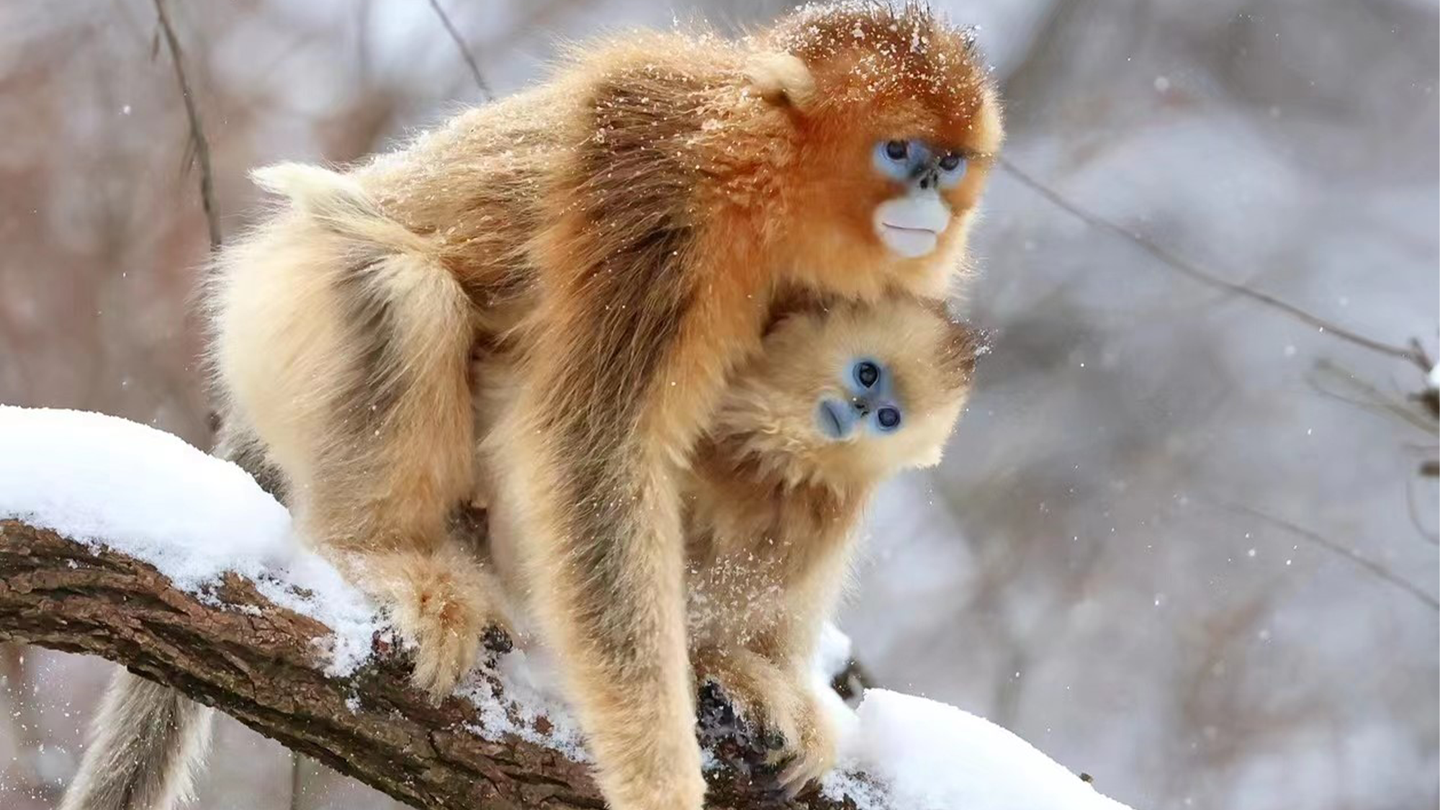
Cold weather is prime time for humans to stay inside and snuggle up with loved ones. For our primate cousins, cuddling may even keep them healthy, as frosty temps and social bonds seem to go together like hot chocolate and marshmallows. Chilly temperature behavior, as it turns out, may also alter the course of evolution.
A study published June 1 in the journal Science found that a species’ long-term adaptation to life in extremely cold climates led to the evolution of successful social behaviors. Asian colobines living in colder regions saw genetic changes and adaptations to their social behaviors including extended care by mothers, which increased infant survival and the primates’ ability to live in the large complex multilevel societies we see today.
[Related: These primate ancestors were totally chill with a colder climate.]
An international team of researchers from the United States, China, the United Kingdom, and Australia studied how langurs and odd-nosed monkeys adapted over time. These members of the colobine family are leaf-eating monkeys that have been on Earth for about 10 million years. Their ancient ancestors dispersed across the planet’s continents and learned to live in tropical, temperate, and colder climates.
“Virtually all primates are social and live in social groups,” study co-author and University of Illinois Urbana-Champaign anthropologist Paul A. Garber said in a statement. “But the groups differ in size and cohesiveness. There are those that live in units of two or three individuals and others living in communities of up to 1,000 individuals.”
According to Garber, genomic studies suggest that the harem unit of organization—one male with two or more females and their offspring—was the ancestral norm for Asian colobines. Males are intolerant of other rival males and will fight to protect their turf. In some species, the females will stay with their natal group, while in others, both sexes leave to join or form new harems.
More complex societies formed over time. Some odd-nosed monkeys still form harems, but aren’t territorial. “This means their group territories can overlap and there are times they may come together to forage, rest and travel,” said Garber.

Snub-nosed monkeys form a multilevel or modular society where multiple harems remain together throughout the year and create a large, cohesive breeding band. The team on this study recorded a society of about 400 individuals and breeding between individuals from different harems was common in golden snub-nosed monkeys. This inter-harem breeding happened roughly 50 percent of the time.
The study used ecological, geological, fossil, behavioral, and genomic analyses, and found that the colobine primates that lived in colder places tended to live in larger and more complex social groups. The glacial periods over the past six million years likely promoted the selection of genes that are involved in cold-related energy metabolism and hormonal regulation in the nervous system.
[Related: Baboons can recover from childhood trauma with a little help from their friends.]
Black-and-white snub-nosed monkeys in some parts of China live in low-oxygen elevations up to about 13,500 feet where night time temperatures can drop below zero on the coldest evenings. The Odd-nosed monkeys living in extremely cold locations developed more efficient pathways for dopamine and oxytocin. Oxytocin particularly is an important neurohormone for social bonding and this hormonal efficiency may lengthen the time a mother monkey takes care of her baby. This led to longer periods of breast-feeding and increase in infant survival.
These adaptive changes appear to have further strengthened the relationships between individual monkeys, increased tolerance between males, and encouraged the evolution of more complex and larger multi level societies that go a long way. Strong social bonds can even help gut bacteria health in some monkeys.
In future studies, the team is interested in studying how changes in mating and social behavior may be the result of genetic changes from past environments and other social factors from the past.
“With climate change becoming an hugely important environmental pressure on animals, it is hoped that this study will raise awareness for the need to investigate what course social evolution will take as the prevailing climate changes,” study co-author and University fo Western Australia biological anthropologist Cyril Grueter said in a statement. “Our finding that complex multilevel societies have roots stretching back to climatic events in the distant evolutionary past also has implications for a reconstruction of the human social system which is decidedly multilevel.”
The post Chilly climates may have forged stronger social bonds in some primates appeared first on Popular Science.
Articles may contain affiliate links which enable us to share in the revenue of any purchases made.
from | Popular Science https://ift.tt/6aIgFR4




0 Comments